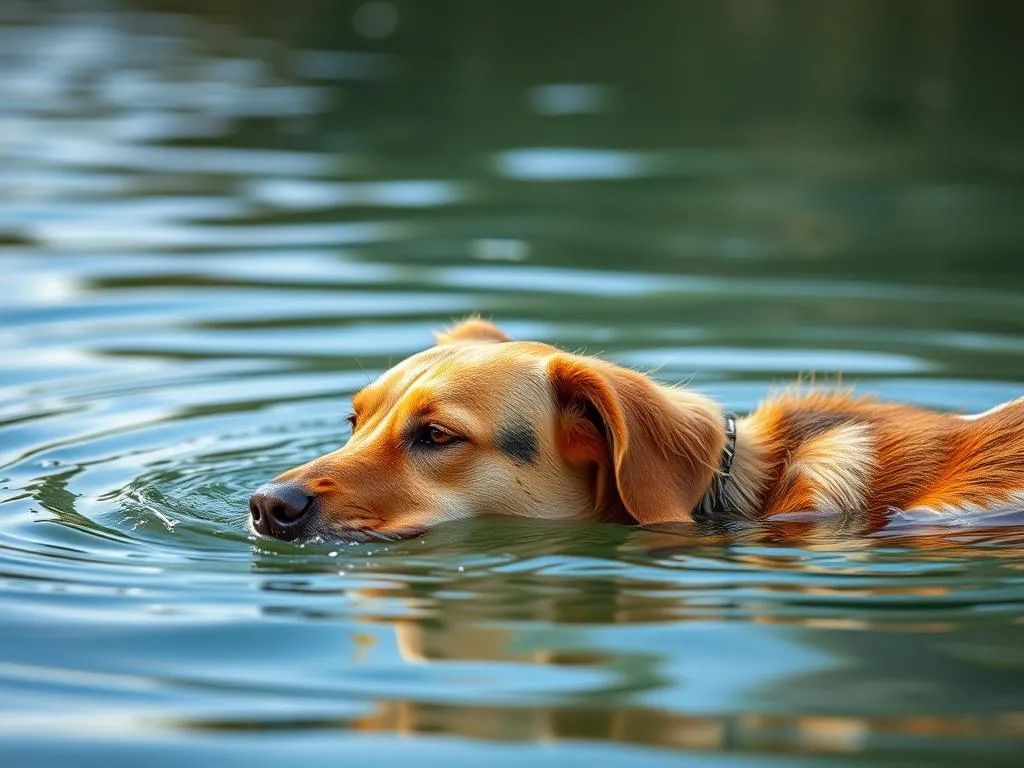
Introduction
As the summer sun beckons us outdoors, many dog owners find themselves planning fun water-related activities with their furry companions. Whether it’s swimming in a pool, splashing in a lake, or enjoying a day on a boat, understanding how to keep dogs safe around water is paramount. Water can be an enjoyable playground for dogs, but it also poses certain risks that every pet owner should be aware of. This article aims to provide essential tips and guidelines to ensure that your four-legged friends can enjoy water safely.
Understanding the Risks
Common Water Hazards for Dogs
When it comes to water safety, awareness of potential hazards is the first line of defense. Here are some common risks that can threaten your dog’s safety around water:
- Drowning Risks: Just like humans, dogs can drown if they are unable to keep their heads above water. Even strong swimmers can find themselves in perilous situations.
- Strong Currents and Tides: Natural bodies of water can have unpredictable currents and tides that may sweep a dog away from safety.
- Hidden Underwater Dangers: Rocks, debris, and other hidden obstacles can pose severe threats. These dangers can injure your dog or prevent them from swimming back to safety.
- Contaminated Water Sources: Lakes and ponds may contain harmful bacteria or parasites that can affect your dog’s health. It’s essential to be cautious about where your dog swims.
Specific Breeds and Their Water Abilities
It’s also important to recognize that not all dogs are created equal when it comes to swimming capabilities. Certain breeds are natural swimmers, while others may struggle:
- Breeds That Are Natural Swimmers: Dogs like Labradors, Newfoundlands, and Portuguese Water Dogs have an innate ability to swim and are often drawn to water.
- Breeds That May Struggle in Water: Breeds such as Bulldogs, Dachshunds, and Pugs may have physical limitations that can hinder their swimming ability. These dogs should always be closely monitored around water.
Preparing Your Dog for Water Activities
Assessing Your Dog’s Comfort Level
Before you take your dog for a dip, it’s crucial to assess their comfort level with water. Look for signs of anxiety or fear, such as:
- Cowering or backing away from the water
- Excessive barking or whining
- Refusal to enter the water
If your dog shows signs of fear, consider gradual exposure techniques. Start with shallow water, allowing them to wade in at their own pace. Encourage them with treats and praises to build positive associations.
Training Your Dog for Water Safety
Training your dog for water safety is an essential step. Here are some effective strategies:
- Basic Commands and Recall Training: Teach your dog commands like “come,” “stay,” and “leave it.” These commands can be lifesavers in an emergency.
- Teaching Dogs to Enter and Exit the Water Safely: Use positive reinforcement to show your dog how to enter and exit the water. This training can prevent panic and confusion.
Using Safety Equipment
Safety gear can provide an extra layer of protection for your dog:
- Life Jackets: A properly fitted life jacket is crucial for dogs who may not be strong swimmers. Ensure it has a handle for easy retrieval.
- Leashes and Harnesses: Use a secure leash and harness when near water to keep your dog under control.
- Dog Booties: If your dog will be walking on hot sand or rough surfaces, consider using dog booties to protect their paws.
Supervising Your Dog Around Water
Active Supervision Techniques
Active supervision is crucial. Here are some effective techniques to keep your dog safe:
- Always Keeping an Eye on Your Dog: Never leave your dog unattended in or near water. Even if they seem confident, accidents can happen.
- Setting Boundaries: Establish designated swimming areas where your dog can safely enjoy the water. Use markers to indicate safe zones.
Recognizing Signs of Distress
Being able to recognize when your dog is in trouble can save their life. Look for signs such as:
- Excessive splashing or struggling
- Fatigue or difficulty keeping their head above water
- Unusual vocalizations, such as yelping or whining
If you observe these signs, take immediate action. Call your dog back and, if necessary, go into the water to assist them.
Emergency Procedures
In the event of an emergency, knowing what to do can make all the difference:
- Immediate Actions: If your dog is in distress, calmly approach them and guide them to safety. Avoid panicking, as your dog may sense your anxiety.
- Canine CPR: Learning basic canine CPR can be invaluable. If your dog is unresponsive, check for breathing and pulse. If neither is present, perform CPR by placing your hands on their chest and compressing rhythmically.
After Water Activities
Drying and Cleaning Your Dog
Once your water fun is over, proper drying and cleaning are essential:
- Importance of Drying Ears and Fur: Moisture in a dog’s ears can lead to infections. Use a towel to dry their ears thoroughly.
- Rinsing Off Chlorine or Saltwater: Always rinse your dog off after they swim in chlorinated pools or saltwater. This helps prevent skin irritation and other health issues.
Monitoring for Health Issues
Keep an eye on your dog for any signs of water-related illnesses, including:
- Ear Infections: Look for signs of redness, swelling, or excessive scratching near the ears.
- Diarrhea: Changes in stool can indicate ingestion of contaminated water.
If you notice any concerning symptoms, consult your veterinarian.
Hydration and Rest
After a day of swimming, ensure your dog stays hydrated:
- Importance of Providing Fresh Water: Always have fresh water available for your dog, especially if they’ve been active in the sun.
- Recognizing Fatigue in Dogs Post-Activity: Watch for signs of exhaustion, such as heavy panting, lethargy, or unsteady movements. Allow your dog to rest and recover.
Fun Water Activities for Dogs
Safe Swimming Locations
Choosing the right location for water activities can enhance your dog’s experience:
- Recommended Dog-Friendly Beaches and Lakes: Research local beaches or lakes that are known to be dog-friendly. Look for areas with shallow water and minimal hazards.
- Safety Checks for Local Swimming Spots: Before heading out, check for any warnings or advisories about water quality and conditions.
Engaging Games and Activities
Not all water time needs to be about swimming. Consider these fun activities:
- Fetching Games in the Water: Toss a floating toy into the water for your dog to retrieve. This encourages swimming and provides great exercise.
- Agility Exercises on Floating Devices: Set up a floating obstacle course using pool floats or inflatable devices. This can help build your dog’s confidence in the water.
Socializing with Other Dogs
Water activities can also be a great way for your dog to socialize:
- Tips for Introducing Your Dog to Other Dogs in Water: Introduce them slowly to new dogs, ensuring they are comfortable before allowing interactions.
- Monitoring Interactions to Prevent Accidents: Keep a close watch on playgroups to prevent roughhousing that could lead to accidents.
Conclusion
Understanding how to keep dogs safe around water is vital for every dog owner. By being aware of potential risks, preparing your dog for water activities, and supervising them closely, you can ensure that your pet enjoys their time in and around water safely. Encourage proactive safety measures while also embracing the joy of water play. Share your tips and experiences, and let’s create a community dedicated to keeping our furry friends safe!
This article covers essential points to ensure your dog has a safe and enjoyable time around water while integrating the key focus of dog water safety.









